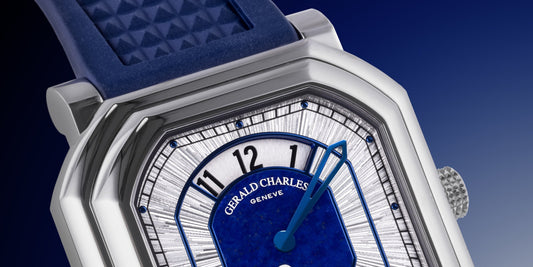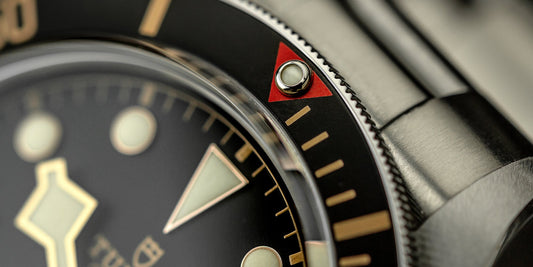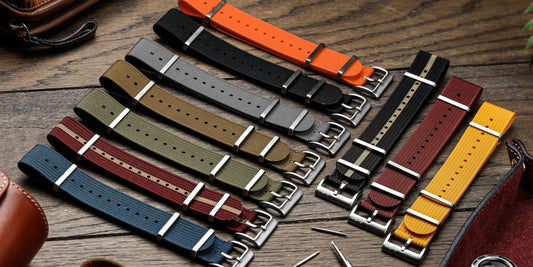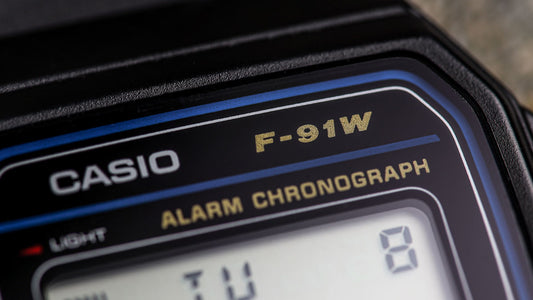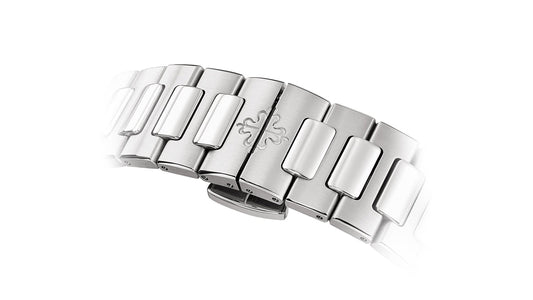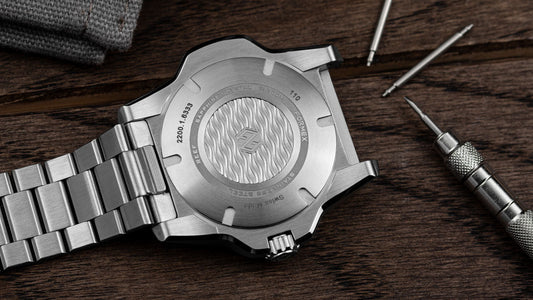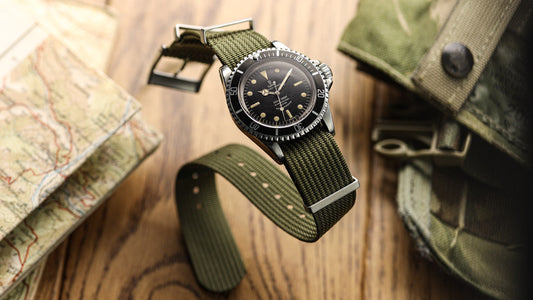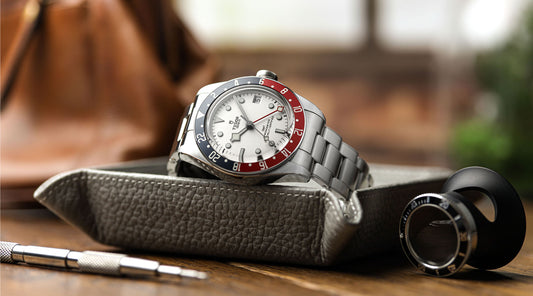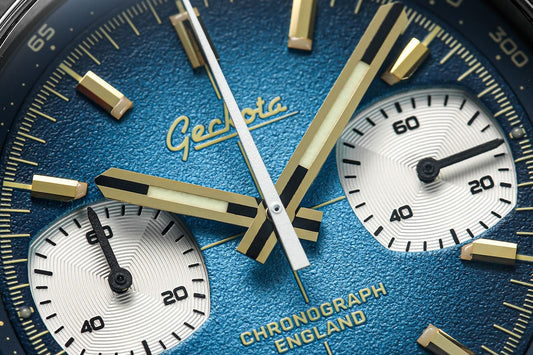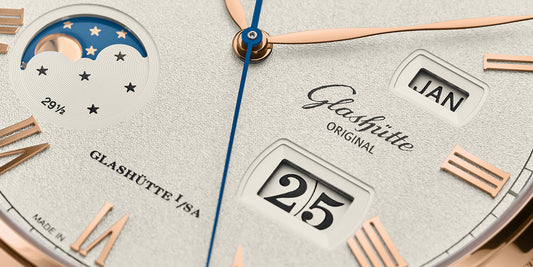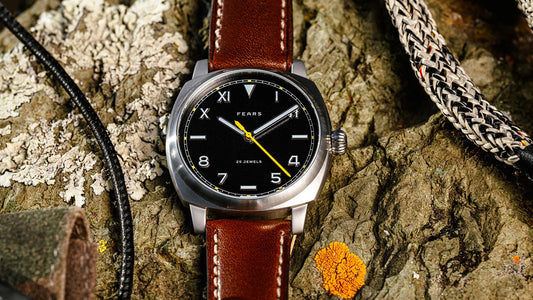Take a look at the latest offering from Newmark...
There is a very strong vogue for field watches at present. A field watch is a 3-hander, usually with no date. By tradition, it is relatively small, waterproof and luminous. The designs usually feature a military-style dial, based on numerals rather than indices. No chronograph, no GMT, no bezel, no fuss. Simple. And, a field watch must be affordable. The concept is, after all, based on watches issued to the infantry, for use in conditions likely to occasion replacement on a regular basis. The aesthetic of a highly competent, rugged but subtle, no-nonsense timepiece appeals to the zeitgeist of these COVID times. Somehow it shows an informed, capable style coupled to restraint, as well as a considered masculinity. A field watch eschews anything brash, oversized or irrelevant.
Newmark the company
I like the concept of a good field watch, and lookout for new examples coming to market. When Newmark announced their entry into the genre back in May, I was interested. Based in Cheltenham, Newmark’s founder Ewan has built a strong reputation for the re-invigorated brand with some well-regarded no-nonsense models to date, having started in 2018. The first was their remake of the Newmark 6BB chronograph, originally one of the "Fab Four" chronographs issued to the RAF. Interestingly, Ewan opted for a mecha-quartz movement in the 6BB.
He reasoned that any of the 2-register mechanical movements currently on offer would either be too expensive, or not reliable enough to offer in a military watch re-issue. A few (myself included) queried this choice as one of the sub-dials is a slave 24-hr hand, rather than a running seconds, which would be traditional for a 2-register chronograph. But the success of the 6BB vindicates the selection entirely. The 6BB has spawned other colour variations on the same chrono, since then Ewan has completed a successful Kickstarter campaign for the Newmark 71, a vintage-inspired dive watch offering a host of dial/bezel and date/no-date options.

The Newmark 71 Diver - Image Credit: David Sweeting
It boasts an almost unheard-of specification for the cost, including the option of a lumed sapphire bezel insert matched to dial colour. I have one. Always promised as a Limited Edition, the few examples of the 71 produced in excess of those funded on Kickstarter sold out very quickly, and the watch continues to trade at a premium.
The Newmark 52 - What it does

The Newmark 52 - Image Credit: David Sweeting
So this is the 52 - Newmark's third offering, and this time Ewan has decided to develop and procure it himself, without using Kickstarter, a process that Ewan describes as being nerve-wracking, rather than difficult. It is now for sale directly though Newmark's site. Interestingly, it is the first offer that seems to have no direct design heritage from the Newmark models of yore. The company did offer a model called the 52, but it looked nothing like this.
The 52 takes the Field watch concept and puts Ewan’s distinct spin on it. 3 options are offered. V1 has a Matte black dial with white hands and dial markings, V2 is Gloss Black dial with gilt dial and hands, and V3 an Ivory dial with black dial print and heat-blued hands. All are offered on different colours of Newmark single pass Military Nylon. All dial designs are identical, all are lumed with Super Luminova C3-X1. No fauxtina here, despite the obviously vintage feel to the design. Ewan deliberately avoided the often-divisive issue of coloured patina, preferring function and a true appearance of what they are, a new watch.
The range of dials is very cleverly thought out, with V1 being a modern colourway specified for legibility, V2 a vintage-looking option, and V3 covering the older-still look of WWII ATP-style of military watch. It is a credit to the design that they each look so original.

The Newmark 52 - Image Credit: David Sweeting
The case is asymmetric, in order to provide crown protection without using crown guards. As a collector of Lemania-powered watches, the case and dial design immediately reminded me of the Tg195, a watch issued to the Swedish military with a Chronostop-like push button hack to 12 for the second hand.
Ewan confirms this 1950s classic formed the basis of his inspiration for the design. He points out that the Tg195 shares many elements of his own 6BB case and a very similar tall numerals, so it seemed a prime candidate to use as a starting point for a time only version of the 6BB. This dial, complete with fully enclosed seconds track round the dial and the Speedmaster-like second hand with reverse tapered counterpoise really does doff its cap to the Tg195.
However, Ewan has resisted the temptation to use the syringe H and M hands of the original and has cleverly opted for similar design to the Newmark 71's minute hand, imparting the 52 with even more brand DNA.
The all-brushed case size is right in the Field Watch sweet spot, 37mm across the bezel, although this means the true case diameter is nearer 40mm due to the asymmetric sweep to the crown. It is a mere 10.5mm thick from caseback to the sapphire crystal, and at 100m WR it keeps capability at the forefront of the design.

The Newmark 52 - Image Credit: David Sweeting
Once again Ewan has made what might be a bold choice in terms of movement. Most smaller brands offering into this genre automatically select one of the more affordable mechanical movements, usually from Miyota. Ewan has instead opted for a very specific quartz movement, the Seiko VH31A. The main differentiator between this and most other quartz movements is the "sweep" second hand. The VH31A does not tick over a single second at a time, 60 per minute. Instead it advances in quarter-second steps, 240 of them per minute. This gives the impression of a sweep second, albeit with a slight hint of stutter not seen in mechanical watches. Ewan confirms that this movement was his choice from the very start, he never intended this to be a mechanical watch, although the sweep helps maintain the appearance of one.
Quartz is an intelligent choice for a field watch. You pick it up, wear it, put it down again and leave it until you need it again. When you do, it’ll be telling the right time, with no date to correct after short months.
Lastly, it may be a surprise that despite the 100m WR, the crown is not a screw-down type. I raised this with Ewan, to which he responded “A good question. Given the use for which the 52 is intended then I felt that a non-screw crown would be perfectly suitable with the 100m water resistance specification. Were we to have gone with a screw-down-crown then I would have insisted on a screwed-in crown tube (as with our Newmark 71) which would have entailed an additional cost which I felt wasn’t justified in this case.” Given the case’s protection of the crown, I am inclined to agree.
So the 52 is offered for £195 including worldwide shipping, and it seems Ewan has also succeeded in fulfilling the affordable part of the field watch brief.
Hands-on with the Newmark 52
To be honest, most of the review so far was written before I even got the watch, using one render, Ewan’s Instagram photos and the specifications available on the Newmark website. I bought the V3 Ivory-dialled version. I have to say, it was a hard choice. The purist in me feels that black/white V1 version is the truest field watch. The traditionalist suggests the black/gilt V2 is most in keeping with the original 1950s design. But the heart won, and the V3 is mine.
The main reason is that it looks great. Also, an Ivory dial is an option that is not really available in most watches, and as a result I have very few in my collection. All the ones I do have are from the 1940s bar one, a Timefactors Smiths PRS29-AM. As a result, none of my pale-dialled watches have any lume, and this does, in spades. I guess that the one that'll sell out quickest is the gilt version, as this compelling combination is not often seen in most field watches on the market now, and the gilt looks very nicely executed. But my predictions are wrong…..
So, having received the watch and worn it, I offer these observations. It arrived in a pleasingly vintage manilla card box, the watch wrapped in brown greased paper inside that. Simple, unadorned practicality, very reminiscent of the packaging I have seen for the original HS9 watches.
Onto the watch itself. A field watch is all about legibility, and the 52 delivers. The flat crystal with internal AR obscures none of the dial and everything is there to see from most angles. The ivory of the dial is quite subtle and pale, but definitely off-white. The blued hands are very darkly visible against it, but create lovely steely blue flashes in bright conditions. The dial print is excellent, with minimal serifs on the main numerals and none on the second track.

The Newmark 52 - Image Credit: David Sweeting
The lume is very bright on a sunlight-to-shade transition and goes on to glow for a long time later. The area of the lume is relatively modest so it is a surprise how effective it is. I was a little concerned that the hour and minute hands are of such similar design that a cursory glance might be confusing, but actually, they are very easily differentiated by length alone.
The use of a “sweeping” quartz movement is one of the more unique qualities of this watch, but at 4 steps per second I was concerned that the sweep would look forced, more of a stutter than a smooth transition. After all, even the slowest of mechanical movements uses 1/5th seconds steps. I shouldn’t have been concerned, it looks really quite convincingly mechanical.

The Newmark 52 - Image Credit: David Sweeting
The lug to lug distance on the 52 is 46mm, the case is ostensibly flat and the crown does not protrude at all. All of these allow the watch to sit very easily on the wrist, on a Perlon 2-piece strap in leather, canvas or anything else you pair it with. As the head only weighs a featherlight 50g, there is no issue of it crashing about on your wrist if you do any type of exercise, regardless of how strenuously you do it. And the minimal thickness allows it to slip into and out of sleeves or cuffs without getting hung up. The supplied single pass strap is very nice, with generous sealed holes and brushed hardware. I might have preferred drilled lugs, so that I had the option of using ultra-secure single-shoulder springbars, but it is a relatively small point. One might also argue that a dome to the crystal would help with the vintage appearance, but I perfectly understand that the additional cost of this would be significant.
The polished crown is very well protected, hardly peeking out over the asymmetric case at the front, it needs gripping from the underside so move it. It is quite easy to withdraw for time adjustment, although it certainly feels stiff enough to resist accidental movement.
Final thoughts
Overall, this is a very successful field watch, intelligently specified, and delivers exactly what it should in terms of robustness and legibility in all conditions. But that is by no means all. This is also a very elegant design, with classical vintage appeal. You can put this on a simple 2-piece leather strap and it scrubs up pretty smartly, in a way something like a CWC G10 could never do. Elegance is not something a lot of field watches can offer, they tend to concentrate a little too much on being in the trenches, and less on the regimental dinner after the war is won. To its credit, the Newmark 52 would look good in both arenas.
I think Ewan is destined to be busy sending these out over the forthcoming weeks. Ewan is keeping his cards close to his chest in regard to Newmark’s next move, merely hinting that another dive watch may be in the offing inspired by a combination of 1970s’ Newmark watches. I wish him luck, although it certainly seems that he is perfectly capable of making his own.





